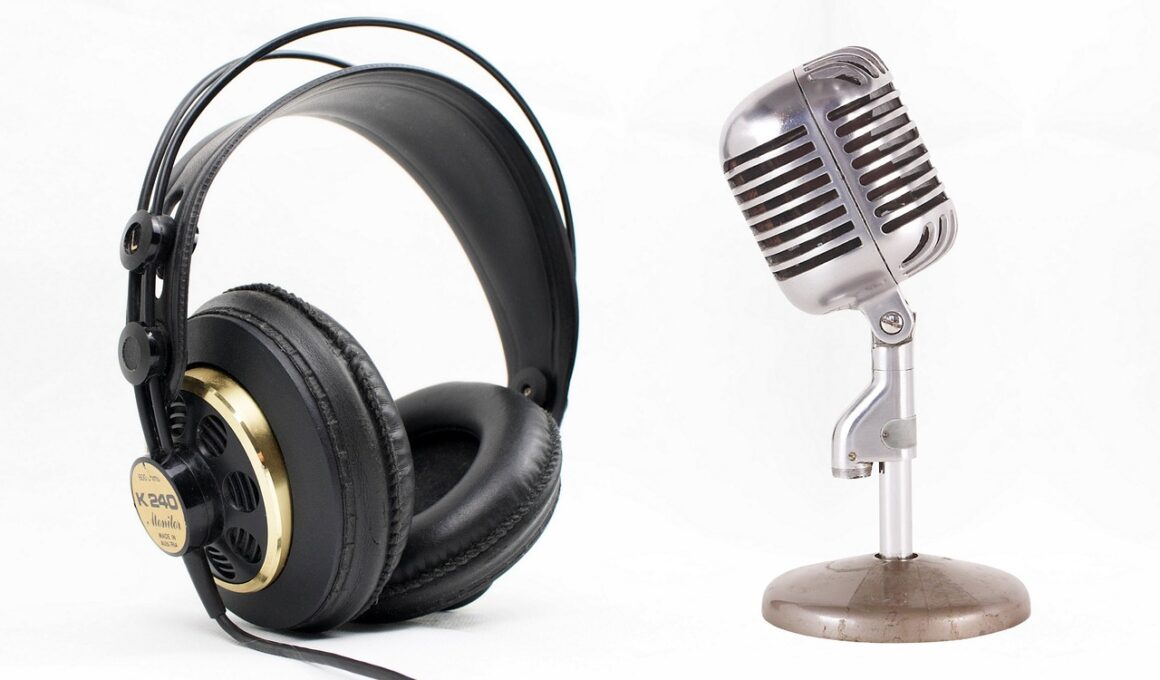Step-by-Step Guide to Audio Editing for Social Media Videos
Creating engaging social media videos requires not just compelling visuals but also high-quality audio. Audio editing is a crucial step that significantly enhances the overall viewer experience. When editing audio, it’s essential to start with a clear goal in mind. Are you aiming to create a lively atmosphere, or do you want to convey an informative tone? To achieve your desired effect, consider the following techniques: incorporating background music, adjusting sound levels, and using sound effects strategically. Each element should serve the purpose of maintaining viewer engagement while ensuring clarity and comprehension. Experimenting with different sounds will help you find the perfect fit for your video. Also, always remember to balance your audio tracks to avoid overpowering dialogue or narration with music. Using software like Adobe Premiere Pro or Audacity can facilitate this process, providing you with the tools needed for precise audio editing. Implementing these techniques will improve not only the audio quality but also the perceived professionalism of your social media videos, making them more likely to resonate with your target audience.
After determining your audio goal, the next step is to gather your audio materials. This process often involves selecting background music that aligns with the theme or mood of your video. When choosing music, pay attention to copyright issues. You can find royalty-free music on platforms like Bensound or Epidemic Sound. These sites offer extensive libraries of tracks in various genres suited for different types of projects. Additionally, consider sourcing sound effects that enhance the visual elements of your video. Use sound effects sparingly to ensure they don’t distract from, but rather complement, the primary audio. Useful sound effects can include ambient noises, whooshes for transitions, or humorous sound bites for comedy sketches. Once you have your audio assets, it’s time to start editing. Use your audio editing software’s features to trim, fade, and adjust your clips to fit seamlessly with your video content. Pay attention to timing and cohesion of audio with visual elements to create a polished final product.
Editing Techniques to Enhance Your Audio
When it comes to audio editing, a few essential techniques can vastly improve the sound quality of your social media videos. One effective method is using equalization, or EQ, which allows you to adjust the balance of different audio frequencies. By boosting certain frequencies and cutting others, you can enhance clarity, making dialogue or key sounds more pronounced. A low-pass filter can help eliminate unwanted high-frequency noise during speech. Similarly, compressing your audio tracks will smooth out volume levels, creating a more consistent listening experience. This is especially useful for dialogue, as it helps maintain a steady volume level throughout your video. Placing quiet dialogue next to loud background music can confuse your audience; thus, compression serves as a useful remedy. You’ll also want to explore fade-ins and fade-outs for music tracks which can help eliminate abrupt stops and starts. Utilizing these techniques systematically will elevate the audio quality and enable better engagement with your viewers. Always preview your edits and refine your audio to ensure the best results, as good audio can significantly influence viewer retention.
Moreover, utilizing ambient sounds can add depth and immersion to your social media videos. These subtle sounds are integral in creating a realistic atmosphere for your viewers. They often serve as the backdrop, enhancing the narrative without distracting the audience. To integrate ambient sounds effectively, consider the setting of your video. For example, if you’re filming in a bustling city, incorporating background traffic noise can make your audience feel present in the scene. Similarly, if your video revolves around a relaxing theme, gentle nature sounds can evoke a sense of peace. Spectrally, these sounds usually occupy a different frequency range than dialogue, making them suitable for layering underneath your primary audio tracks. Try adjusting their volume levels to ensure they complement rather than compete with your main audio. As you experiment, remember that balancing ambient sound with your main audio is crucial for achieving a polished final product. The use of these elements will not only create a more relatable viewing experience but will also contribute significantly to the overall aesthetic of your video.
Analyzing Your Audio After Editing
Once you complete the editing process, it’s critical to analyze your audio before finalizing the project. This step allows you to identify any inconsistencies, background noise issues, or volume discrepancies that could disrupt the audience’s experience. Listening to the audio on various devices, such as headphones, laptops, and phones, can offer different perspectives on your sound quality. A test run will help you gauge how the audio interacts with the visuals, check for sync issues, and confirm that every audio element supports the overall message. Pay attention to the transition points between songs and sound effects to ensure smoothness and cohesion. You might find certain sounds need adjustments or that some elements stand out too much. Using a sound meter can also help visualize audio levels, allowing for more precise adjustments. Experiment with fading music before a voiceover starts, ensuring it doesn’t overpower the narration. The more thorough your analysis, the better your project will turn out. This commitment to auditory detail can set your content apart in the crowded social media landscape.
After your audio is perfected and the analysis is complete, exporting your finalized video correctly is paramount. When exporting, select an appropriate audio format that balances quality and file size. Formats like WAV offer lossless quality, but they can be large. Alternatively, MP3 files provide a good balance of size and quality for online use. Be aware of your target platform’s specifications when choosing audio settings. Social media platforms often compress files, so testing different settings can indicate how that affects sound on the final upload. After exporting, review the video on the platform of choice. Often, slight changes in compressed formats can affect clarity and balance. Do not underestimate the importance of the final listening experience! Consider iterating on your edits even after uploading, especially if you receive feedback from your audience. Their insights can provide valuable perspectives that aid in future projects. Moreover, keeping an organized workflow with proper labeling of audio files helps in maintaining smooth execution on subsequent projects. This way, every new video benefits from the lessons learned in your audio editing journey.
Sharing Your Social Media Videos
Finally, tweeting and sharing your polished social media videos requires careful consideration. It’s essential to promote them effectively to maximize their reach and engagement. Start by understanding your audience so that you can tailor your video’s format and style to meet their preferences. Choose catchy titles and captions that draw attention without misleading viewers. Your audiological elements should support the overall theme, whether it’s fun, inspirational, or educational. Also, using relevant hashtags will help potential viewers find your content more easily and boost visibility across platforms. Engaging thumbnails that visually represent your video’s content play a significant role as well; they’re often the first impression potential viewers have. Consider using text overlays or enticing visuals that reflect the audio’s theme. To further engagement, consider cross-promoting your video on different platforms, such as linking your Instagram footage in a Facebook post or sharing it across multiple community groups. Finally, monitor your video’s performance through analytics, enabling you to learn what works and what doesn’t. This way, each release can become increasingly refined, driving more attention towards your social media presence.
In conclusion, mastering the audio editing process for social media videos is an invaluable skill. This ensures the delivery of captivating content to engage your audience effectively. Start by clarifying your audio goals, selecting appropriate materials, and applying solid editing techniques. Pay special attention to consistency, clarity, and balance throughout your editing process. Incorporate ambient sounds and analyze carefully before exporting to ensure top quality. When sharing, curate your promotion strategy to reach your target audience effectively. Each of these elements works collaboratively to create an engaging video that not only informs but also delights your viewers. Gaining proficiency in these skills can significantly elevate your video-editing capabilities and positively impact your audience engagement. As platforms continue to evolve, adapting your audio strategies will prove vital for sustained success. Through practice and experimentation, your proficiency will grow. Ultimately, high-quality audio design not only enhances your videos but also fosters a stronger connection with your audience. As you embark on your audio editing journey, remember that the power of sound can transform ordinary videos into extraordinary viewing experiences!


